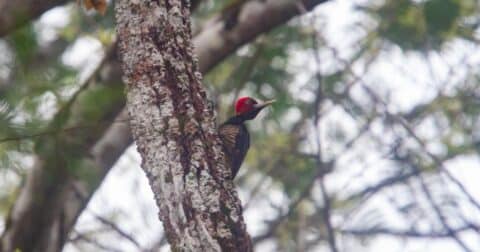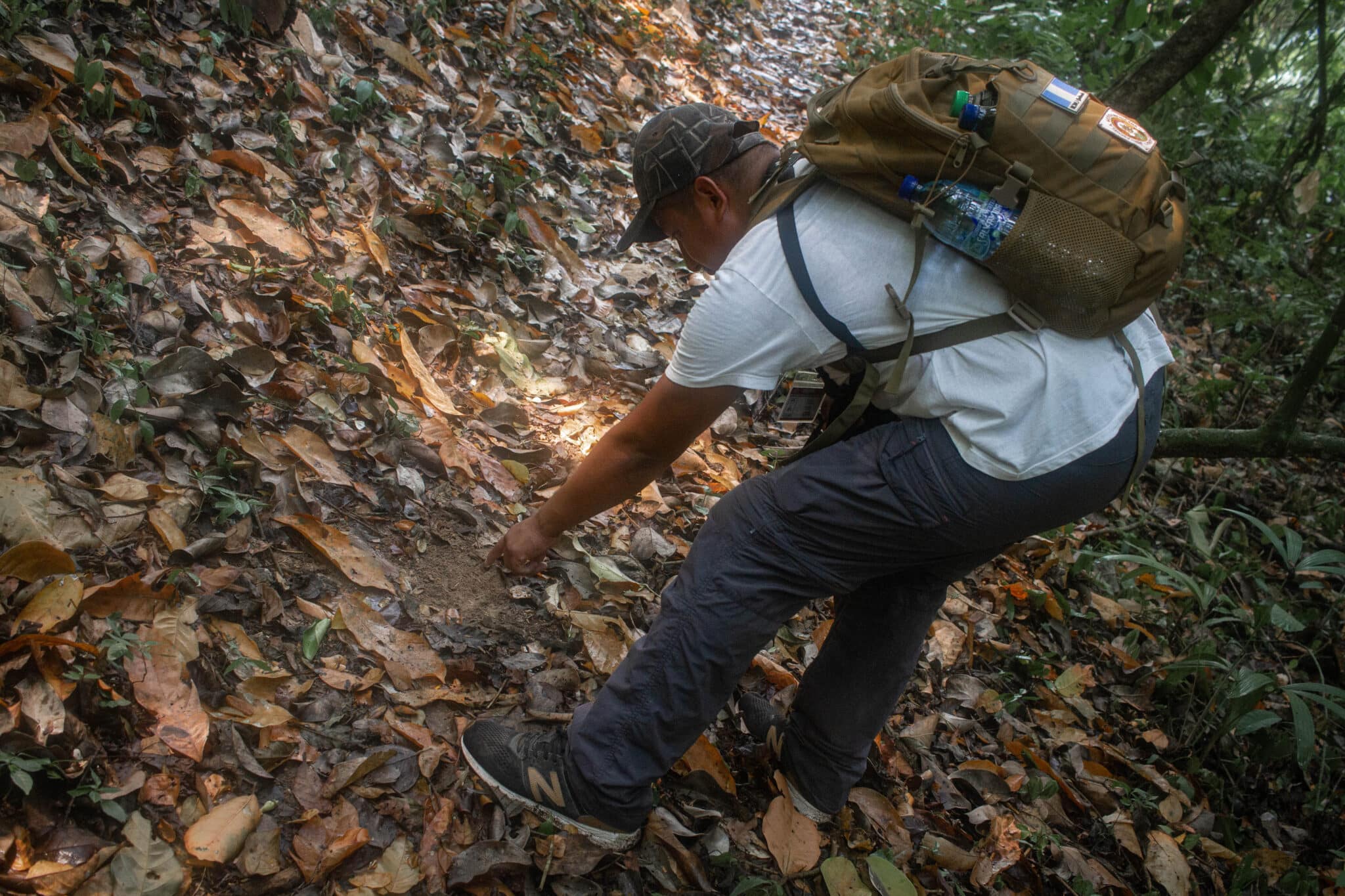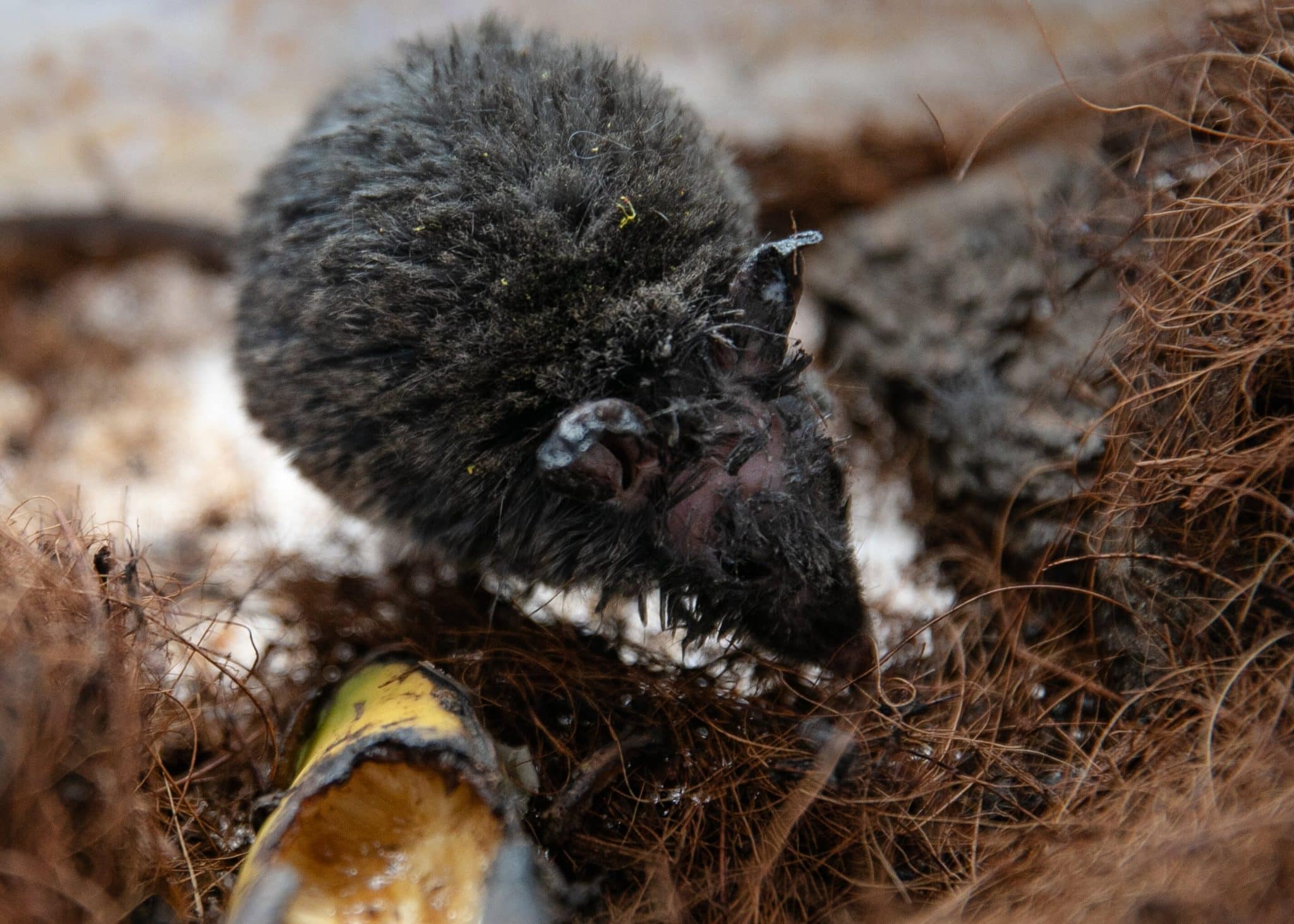Is New York City Getting its Composting Program Right?
Climate•10 min read
Solutions
Rural communities manage their forest — and how species are protected.

Deep in a protected nature reserve in Northern Guatemala’s Sierra del Lacandón National Park, shade from the trees and a slight breeze from the Usumacinta River offer us relief from the heat. Here in the Mayan Biosphere Reserve, there are thousands of species, including the Ramón and Copal trees providing shade, but also Romario Ramírez, one of the many humans who live in the park. Ramírez is our tour guide; he eagerly points to a jaguar footprint on the trail. “By the way the leaves are arranged, you can tell this one was big,” he says. But guiding tourists through the park is just one facet of his work. Ramírez is part of a thriving, community-led initiative to enable the people who live in the park to make a living safeguarding the forest, and its rich biodiversity.
Nearly 20 thousand people live within Sierra del Lacandón National Park — almost all of whom play a role in nourishing and caring for the forest. Forest fires are the largest threat to the reserve, which is massive and spans hundreds of thousands of hectares.

Set mostly by outsiders, the fires are usually intended to clear landscape to expand cattle and soy farms, house illegal drug operations or build illegal settlements. This year alone, Guatemalan officials have recorded 539 fires in Petén, of which 471 were forest fires that consumed 102,032 acres of forest.
While the fires are started by humans, their intensity and ability to spread is made worse by climate change. Residents are trained to deploy a number of strategies for discouraging the fires, including cameras and other surveillance equipment, which are also used to monitor biodiversity and prevent poachers.
“People carry out their firebreak rounds on their plots when the dry season begins to prevent fires from spreading,” Francisca Gutiérrez, cook, tour guide and wife of Romario Ramírez, tells Sentient. “By taking care of the forest,” Gutiérrez says, “they will create alternatives to obtain economic benefits.” In other words, these initiatives support the forest and the humans living in it.
“Everyone in the community is involved,” Ramirez says. The cooks who accompany us on the trips take turns, as do the guides and boatmen. According to a Ministry of Environment pamphlet, collectively these efforts have spared 369,000 tons of CO2 emissions and 870 species of flora and fauna between 2012 and 2014.
To keep visitors engaged, guides lead hikes within the jungle, but also excursions to ancient archaeological sites such as Yaxchilán and Piedras Negras. Sustainable tourist programs or ecotourism has become increasingly popular as a way to help remote communities become self-sufficient, but they are not without challenges. According to the paper “Timber, Tourism and Temples,” ecotourism can require expensive and invasive infrastructure in natural areas, similar to what is happening in Mexico with the construction of the Tren Maya.
The local tourism commission in this small Northern Guatemalan community hopes to guard against these threats by encouraging collaboration between residents and biologists from Defensores de la Naturaleza, to limit development.

Another strategy is to invite tourists to think about the reserve as more than a locale to visit. “We don’t aim to be a business but rather invite tourists who want to see how we live and develop as a community,” Gutiérrez tells Sentient.
“The Usumacinta River and the jungle are beauties that we do not want to be lost,” says Ramírez, who adds, “we fight so that this does not happen.”